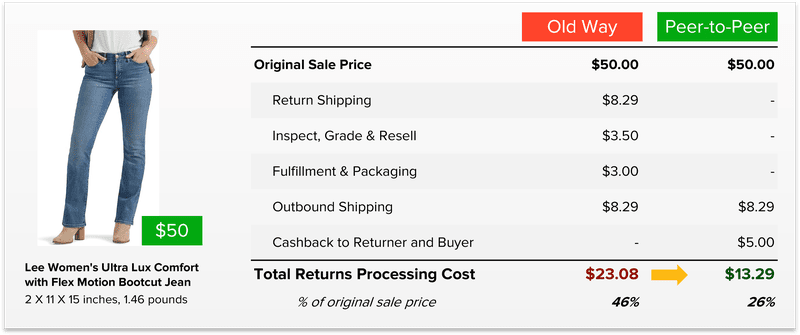Amazon Shipping Software: Boost Amazon Sales & Cut Costs with Smart Shipping Automation

Last updated on March 20, 2025

In this article
 10 minutes
10 minutes
- What is Amazon Shipping Software?
- The Importance of Sales Channel Integrations: Selling Beyond Amazon
- The Benefits of Multi-Channel Shipping Software
- How to Choose the Right Amazon Shipping Software
- Amazon’s Performance Metrics for Standard and Seller Fulfilled Prime (SFP) Orders
- What is Amazon Buy Shipping API? Benefits & Limitations
- Why Cahoot is the Best Software for Shipping Amazon Orders (Including Seller Fulfilled Prime)
- The Future of Amazon Fulfillment is Here
- Frequently Asked Questions
What is Amazon Shipping Software?
Efficient ecommerce order fulfillment and shipping is the backbone of success for Amazon Sellers. Amazon shipping software is a specialized tool designed to streamline Amazon order fulfillment while meeting strict performance metrics. The software assists Amazon Sellers in optimizing their operations, improving visibility, and streamlining logistics for better sales performance. Whether fulfilling standard Seller-fulfilled orders (FBM) or shipping in the Seller Fulfilled Prime (SFP) program, having the right software ensures seamless integration, cost savings, and customer satisfaction.
Modern shipping software integrates with multiple sales channels, (including Amazon Seller accounts), optimizes carrier selection, automates label generation, and ensures compliance with Amazon’s strict delivery expectations. It eliminates manual work, reducing errors and improving fulfillment speed—critical in today’s fast-paced ecommerce environment.
The Importance of Sales Channel Integrations: Selling Beyond Amazon
While Amazon is a dominant force in ecommerce, many Sellers operate across multiple platforms, in addition to their Amazon account, to maximize sales opportunities. Effective shipping software must support:
- Amazon (Marketplace & Seller Fulfilled Prime)
- Walmart
- Shopify
- eBay
- Etsy
- Other marketplaces and ecommerce platforms
Seamless integration ensures all orders—regardless of the platform—are processed from a single dashboard. Without proper integration, businesses face inventory mismatches, fulfillment delays, and operational inefficiencies. The right software centralizes data, syncing inventory and tracking across platforms and marketplaces, reducing manual updates, preventing overselling, and improving customer experience.
The Benefits of Multi-Channel Shipping Software
1. Centralized Order Management
Processing orders from multiple platforms in one place saves time and prevents fulfillment errors. A unified dashboard allows Sellers to efficiently manage shipping for Amazon, Shopify, Walmart, and beyond.
2. Cost Optimization Through Rate Shopping
Smart shipping software automatically compares carrier rates in real-time, helping businesses save money by ensuring they always get the lowest-cost shipping label without compromising delivery speed.
3. Carrier Diversification and Flexibility
Relying on a single carrier can be risky. Multi-carrier support lets Sellers choose from multiple shipping providers based on price, service level, and delivery region, reducing costs and improving reliability.
4. Automated Shipping Label Creation
Generating shipping labels manually is time-consuming and error-prone. Automated label creation and printing speeds up fulfillment, ensuring orders ship faster, more accurately, and at lower labor costs.
5. Reliable Tracking Customer Experience
A robust shipping solution provides efficient order tracking and management for shipping orders, offering real-time tracking updates and notifications that reduce customer inquiries and increases satisfaction by offering complete visibility into shipments.
How to Choose the Right Amazon Shipping Software
Choosing the right Amazon shipping software can be a daunting task, especially with the numerous options available in the market. However, by considering a few key factors, you can make an informed decision that meets your ecommerce business needs. Here are some tips to help you choose the right Amazon shipping software:
- Determine Your Shipping Needs: Consider the type of products you sell, the frequency of your shipments, and the destinations you ship to. This will help you identify the features you need in a shipping software.
- Check Compatibility with Amazon Seller Central: Ensure that the shipping software integrates seamlessly with your Amazon Seller Central account. This will enable you to manage your orders, inventory, and shipping processes efficiently.
- Evaluate Shipping Rates and Services: Compare the shipping rates and services offered by different software providers. Look for software that offers discounted rates, flexible shipping options, and reliable shipping carriers.
- Assess Inventory Management Capabilities: If you have a large inventory, look for software that offers robust inventory management features. This will help you track your stock levels, automate purchase orders, and optimize your inventory management processes.
- Consider Scalability and Flexibility: Choose software that can grow with your ecommerce business. Look for software that offers flexible plans, scalable infrastructure, and customizable features.
- Read Reviews and Ask for Referrals: Research the software provider’s reputation by reading reviews and asking for referrals from other ecommerce Sellers. This will give you an idea of the software’s performance, customer support, and overall user experience.
By considering these factors, you can choose the right Amazon shipping software that meets your ecommerce business needs and helps you streamline your shipping workflow.
Amazon’s Performance Metrics for Standard and Seller Fulfilled Prime (SFP) Orders
Amazon holds Sellers to strict performance standards, especially for those participating in Seller Fulfilled Prime (SFP). To meet Amazon’s strict performance standards, Sellers must ensure their shipping processes are efficient and reliable. Here are the key requirements:
Standard Amazon Orders
To maintain good standing, Sellers must:
- Maintain an On-Time Delivery Rate of 90% or higher
- Late Shipment Rate must not exceed 4%
- Keep the Pre-fulfillment Cancellation Rate below 2.5%
- Provide Valid Tracking for 95%+ of orders
- Ensure Order Defect Rates (negative feedback, A-to-Z claims, chargebacks) remain under 1%
Seller Fulfilled Prime (SFP) Orders
For Sellers enrolled in Seller Fulfilled Prime, the requirements are even stricter:
- Maintain an On-Time Delivery Rate of 93.5% or higher
- Provide Valid Tracking for 99%+ of orders
- Keep the Pre-fulfillment Cancellation Rate ≤ 0.5%
- 1-day Page Views >30%, 2-day Page Views >70% for standard-size products
- 1-day Page Views >10%, 2-day Page Views >45% for oversize products
- 2-day Page Views >15% for extra large products (there is no 1-day requirement for this size tier)
- Same-day handling for Prime orders (orders must ship out the same day if received before the cut-off time)
- Weekend fulfillment capability to match Amazon’s weekend delivery expectation
- Strict delivery speed adherence—late deliveries can result in suspension from SFP
- Sellers must provide free returns for all eligible items weighing less than 50 lb, for any reason
Meeting these requirements requires exceptional shipping efficiency, which is where next-generation shipping software comes into play.
What is Amazon Buy Shipping API? Benefits & Limitations
Amazon provides the Buy Shipping API to Sellers, either when buying postage directly through Seller Central, or as a tool for Sellers looking to ensure compliance with its stringent shipping standards.
Benefits of Amazon Buy Shipping API:
- Guaranteed Valid Tracking: Ensures every order includes a valid tracking number.
- Seller Protection: Orders shipped through Buy Shipping are eligible for Amazon’s Seller protection against A-to-Z claims.
- Automatic Performance Tracking: Amazon monitors compliance and reduces the risk of penalties.
- Multi-Carrier Rate Shopping: Sellers can compare rates across Amazon’s partnered carriers and select the best shipping option.
- Late Delivery Exceptions: Orders that are delivered late can be exempted from performance metrics as long as they were shipped on time.
Limitations of Amazon Buy Shipping API:
- Limited Carrier Choices: Not all carriers are available through Amazon’s Buy Shipping service, which can prevent access to better rates elsewhere.
- Support for 1 Carrier Account Each: Sellers that have multiple carrier rate cards from the same carrier for different size, weight, and/or shipping zone products cannot rate shop across them; Seller Central only supports the use of 1 negotiated account per carrier.
- Potentially Higher Costs: Rates may not always be the lowest available, making third-party rate shopping essential.
While Buy Shipping API has some nice benefits, merchants looking to maximize cost savings and flexibility often pair it with an advanced shipping platform that optimizes fulfillment and reverse logistics beyond Amazon’s system.

Why Cahoot is the Best Software for Shipping Amazon Orders (Including Seller Fulfilled Prime)
Not all shipping software is created equal. Cahoot is purpose-built to meet Amazon’s demanding requirements, ensuring seamless SFP compliance and cost-optimized standard fulfillment.
1. Purpose-Built for Seller Fulfilled Prime (SFP)
Unlike generic shipping solutions, Cahoot was designed from the ground up to handle Seller Fulfilled Prime orders. With automated compliance to Amazon’s performance requirements, weekend fulfillment support, and same-day shipping automation, Cahoot ensures Sellers maintain their Prime eligibility without penalty risks.
2. Automated Rate Shopping for Maximum Savings
Cahoot intelligently compares real-time shipping rates for all the carriers and services you support and creates the cheapest labels that will deliver on time, ensuring all orders always ship at the lowest cost without compromising delivery speed.
3. Multi-Channel Fulfillment Beyond Amazon
Cahoot seamlessly integrates with Walmart, Shopify, eBay, TikTok Shop, and more, providing a centralized dashboard for fulfilling orders across all platforms.
4. Intelligent Order Routing for Faster Fulfillment
Cahoot’s advanced AI-driven order routing automatically assigns orders to the nearest warehouse with stock availability, minimizing transit time and reducing shipping costs.
5. Bulk Label Printing and 1-Click Shipping
With Cahoot, Shipping Labels are created autonomously, no human, so Sellers can print labels for thousands of orders in minutes, eliminating repetitive manual work and improving warehouse efficiency.
6. Effortless Weekend and Same-Day Fulfillment
By automating fulfillment workflows and ensuring weekend processing capabilities, Cahoot helps Sellers stay compliant with Amazon’s Prime-level shipping expectations.
The Future of Amazon Fulfillment is Here
Shipping on Amazon has never been more complex, and Sellers who rely on outdated tools risk falling behind. Cahoot’s next-generation shipping software ensures merchants can meet Amazon’s performance metrics, reduce shipping costs, and streamline multi-channel fulfillment—all from a single platform.
For businesses looking to scale efficiently, grow into or maintain Seller Fulfilled Prime eligibility, and optimize fulfillment operations, Cahoot provides a game-changing advantage.
Are you ready to take your Amazon fulfillment to the next level? It’s time to ditch legacy shipping tools and embrace automation, intelligence, and efficiency with Cahoot.
Frequently Asked Questions
What is a shipping solution?
Shipping solutions are a combination of services, strategies, and tools aimed at managing and streamlining the process of sending products from one location to another.
What’s the difference between Cahoot’s network and Cahoot’s shipping software?
Cahoot’s platform is a peer-to-peer order fulfillment services network where top-rated merchants share warehouse space and fulfillment services with one another. Cahoot’s shipping software is next-generation ecommerce shipping software that can support any size merchant, including high-volume merchants shipping millions of parcels per year. Merchants can use either or both. Our fastest-growing clients use both.
What are the carriers for ecommerce shipping?
The most common national carriers are UPS, USPS, and FedEx, while popular regional carriers include OnTrac, Courier Express, and PITT OHIO, among others. Amazon Shipping will soon be matching the last mile delivery reach of the national carriers. For international shipments, DHL Express and GlobalPost are most common, however, UPS, USPS, FedEx and many other carriers also support international deliveries.
How to ship items you sell online?
To ship products from your house, you can use a shipping carrier like USPS, FedEx, or UPS. First, package your product securely and weigh it to determine the shipping cost. Then, create a shipping label online and schedule a pickup or drop off at a carrier location. You can also purchase shipping and dropoff packages at the same time at any post office, The UPS Store, and/or FedEx Office location.
How can I reduce shipping costs?
To reduce shipping costs, optimize packaging for weight and size, utilize flat-rate shipping options for heavy items, explore discounted shipping rates, offer local delivery or pickup, and consider prepaid shipping. Many platforms like Cahoot and ShipStation offer discounted shipping rates through their carrier relationships that can save many thousands of dollars.

Up to 64% Lower Returns Processing Cost


